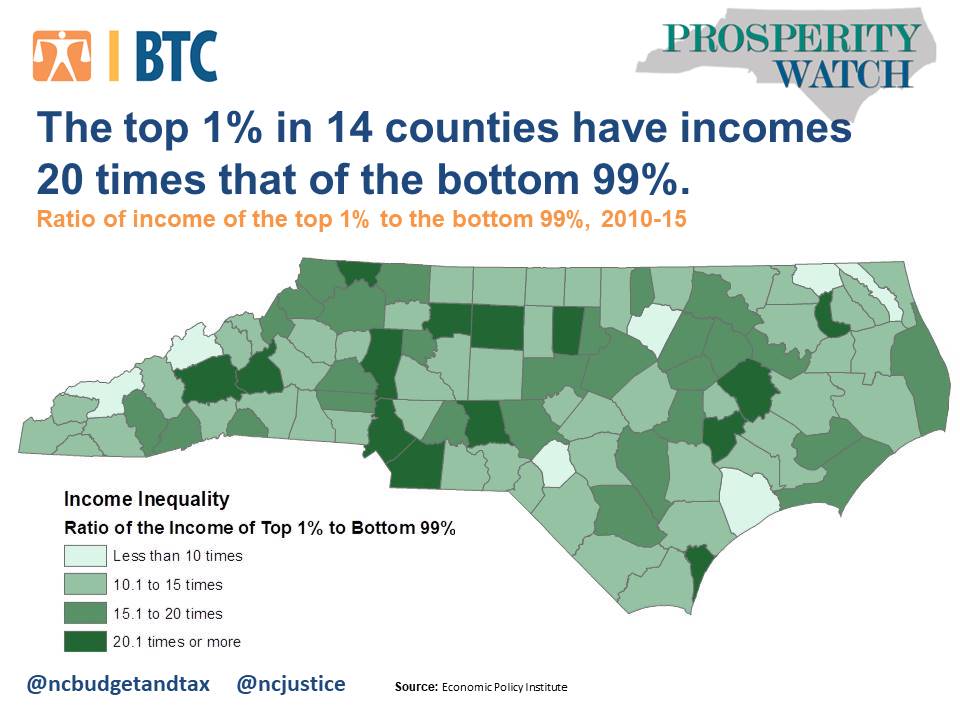North Carolina’s economic recovery has not only failed to reach many communities, the income gains that have occurred have accrued to those at the very top of the income distribution — further growing inequality across the state.
As researchers note in a new report from the Economic Policy Institute, income inequality is not an inevitable outcome of economic growth but is tied to the policy choices that guide who benefits from growth that does occur and by how much. Furthermore, income inequality puts at risk the attainment of various important economic and social goals, including the potential for longer growth, improved well-being, and economic mobility.
This unique county level analysis measured income inequality between the top 1 percent and bottom 99 percent to show that communities across the country have experienced rising income inequality since 2010.
The data for North Carolina is startling. From 2010 to 2015, in 28 of North Carolina’s 100 counties, the top 1 percent captured a greater share of the income growth than that captured by the bottom 99 percent.
The difference in income between the top 1 percent and the bottom 99 percent is greatest in urban areas. In the state’s urban counties, the top 1 percent have incomes that are 23 times that of the bottom 99 percent, whereas in the state’s rural counties that ratio is 14 times that of the bottom 99 percent.
As the map shows, 12 counties saw the incomes of the bottom 99 percent of residents decline and 42 counties have ratios where the top 1 percent had incomes 15 times or higher than the bottom 99 percent. In 14 counties, the top 1 percent have more than 20 times the income of the bottom 99 percent — Mecklenburg (31.2), Macon (26.7), Iredell (26.1), Forsyth (25.2), Guilford (24.9), Alleghany (24.8), Orange (24.6), Union (22.7), New Hanover (22.6), Lenoir (21.5), Montgomery (21.2), Chowan (20.3), Buncombe (20.1) and Pitt (20.1) — thereby performing worse than the national average of this ratio.
Here is a table of county income inequality from the Sommelier and Price research.
 Justice Circle
Justice Circle 
